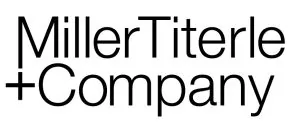The British Columbia government has introduced legislation to modernize the environmental assessment ("EA") of major resource projects. If passed, it would be the first legislation in B.C. to directly support the implementation of the United Nations Declaration on the Rights of Indigenous People ("UNDRIP") and to recognize the inherent jurisdiction of Indigenous nations.
How Did This Come About?
The notion of revitalizing the provincial EA process first emerged in 2017 in the Confidence and Supply Agreement between the BC Green Party and the BC NDP, which paved the way for the NDP's ascension to power. It eventually made its way into Minister George Heyman's mandate letter, which directed him to, among other things, "[r]evitalize the Environmental Assessment process and review the professional reliance model to ensure the legal rights of First Nations are respected, and the public's expectation of a strong, transparent process is met." On March 7th, 2018, Minister Heyman officially kicked off the revitalization process, which has included creating an independent advisory committee, holding workshops with Indigenous nations, and direct engagement with stakeholders.
Indigenous nations have played a key role throughout the development process. Examples of this include: the First Nations Energy and Mining Council, on behalf of the First Nations Leadership Council, leading the Indigenous workshop process, Indigenous perspectives being meaningfully reflected in the composition and mandate of the independent advisory committee, and the Environmental Assessment Office ("EAO") carrying out direct engagement with 67 Indigenous nations. As a result of this progressive process, the proposed legislation addresses many of the common concerns raised by Indigenous nations. While there is still room for further advocacy from Indigenous nations, this process provides a good example of how Indigenous perspectives can be accounted for when developing new legislation that may impact Indigenous interests.
What's New?
The new EA process includes a number of noteworthy changes, including:
- A defined purpose for the EAO that includes supporting reconciliation with Indigenous peoples in British Columbia and implementing the United Nations Declaration on the Rights of Indigenous Peoples.
- A process for seeking consensus with participating Indigenous nations, including a number of opportunities identified throughout the process that aim to secure consent on decisions.
- A commitment to ensuring adequate funding for all participating Indigenous nations.
- An early engagement phase to identify interests, issues and concerns of Indigenous nations, stakeholders and the public, followed by a determination on whether a project is ready to proceed with an EA.
- A mechanism for dispute resolution with Indigenous nations, which will be established in subsequent regulation (subject of future engagement).
- Flexibility in establishing an assessment process to scale to individual projects based on potential effects and identified issues.
- Requirements on what needs to be assessed and considered in decisions (including cumulative effects).
- Modernized compliance and enforcement tools.
What Are the EA Phases?
The new legislation proposes a 6 phase process leading to decision on whether to issue an EA certificate:
- Early Engagement: This phase begins when an initial project description is submitted and ends when a final detailed project description is accepted by the EAO. Based on the initial project description, Indigenous and provincial governments, as well as local communities and the public will have the opportunity to identify key issues. Feedback from the EAO then informs the proponent's development of a detailed project description, which demonstrates how these concerns have or will be considered in the project's design or the assessment process. Indigenous participation will no longer be driven by reference to a strength of claim analysis. Instead, Indigenous nations wishing to participate in the EA will identify themselves by filing their intention to participate during this phase.
- EA Readiness Decision: This phase begins when the detailed project description is accepted and ends when a decision is made to commence an EA (the vast majority of cases), exempt the project from EA, require a revised detailed project description, or terminate the EA process. During this phase, the EAO will seek consensus with participating Indigenous nations aiming to secure consent.
- Process Planning: This phase begins when the EA process commences and ends when a process order is issued. During this phase the EAO will work with the proponent, government agencies and other EA participants to sets out the scope, procedures and methods for the EA, and how provincial and Indigenous processes and decision-making will align, including information requirements, timelines, and public engagement opportunities. The EAO will seek consensus with participating Indigenous nations throughout this phase.
- Application Development and Review: This phase begins when the process order is issued and ends when the EAO determines that issues have been adequately responded to by the proponent and directs the proponent to prepare a final application. During the application development, the proponent will receive feedback from the EAO, participating Indigenous nations and a technical advisory committee, who will also have an opportunity to review and comment on the complete draft application.
- Effects Assessment and Recommendation: This phase begins with the acceptance of the final application and ends with the referral to Ministers as the provincial decision-makers. The EAO will complete an assessment of the project and develop proposed conditions, seeking consensus with participating Indigenous nations and engaging the technical advisory committee. Before referral to the Ministers, the public will have an opportunity to comment on the EAO's assessment and proposed conditions and participating Indigenous nations will have an opportunity to express their consent, or lack of consent.
- Decision: This phase begins when a referral is made to provincial decision makers and ends when Ministers decide whether to issue an EA certificate, and issue reasons for their decision. Ministers must consider the participating Indigenous nations' consent and other decision factors. In the case where a decision does not align with the position of participating Indigenous nations, reasons for issuing the certificate in the absence of consent must be provided.

What Does it Mean for Indigenous Nations Specifically?
The province has positioned the new legalization as advancing reconciliation in various ways, including:
- Identifying Participating Nations: Indigenous nation participation in EAs will no longer be driven by reference to strength of claim. Instead, Indigenous nations will identify themselves during the early engagement phase.
- Building Consensus: The EAO will work with technical staff of participating Indigenous nations throughout the EA process with the aim of building consensus and seeking consensus will be codified throughout the new legislation.
- Seeking Consent: In addition to seeking consensus with Indigenous nations at a technical level throughout the EA process, the new legislation recognizes Indigenous decision making by providing an opportunity for participating Indigenous nations to communicate their consent or lack of consent at two decision points in the EA: the EA readiness phase and the recommendation phase. In the event that an EA certificate is issued despite the opposition of a participating Indigenous nation, reasons for issuing the certificate in the absence of consent will need to be provided.
- Indigenous-led Assessments: The new legislation includes provisions for an Indigenous nation to enter into an agreement with the Minister to conduct the entire assessment on behalf of the Province (provided certain conditions are met) or to conduct part of the assessment (i.e. the potential effects of the proposed project on the Indigenous nation). This approach will allow for government-to-government agreements that are compatible with each Indigenous nation's approach to governance.
- Indigenous Knowledge: The new legislation includes requirements to apply Indigenous knowledge to decision-making in EAs and provisions to protect confidentiality of Indigenous knowledge considered in the EA.
What's Next?
If all goes according to plan and the legislation is passed, the modernized EA process will be brought into force in late 2019. Until then, the EAO will be engaging directly with Indigenous nations, industry, non-governmental organizations and broadly with the public to develop various related regulations and policies. This will present continued opportunities for Indigenous nations to advocate for their interests – opportunities that our team is uniquely positioned to support.
The content of this article is intended to provide a general guide to the subject matter. Specialist advice should be sought about your specific circumstances.

